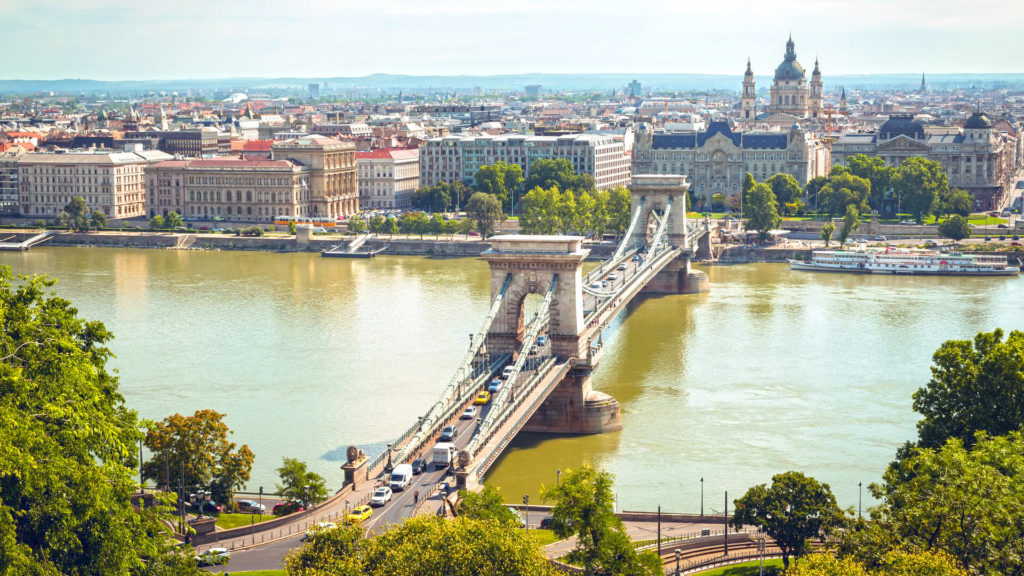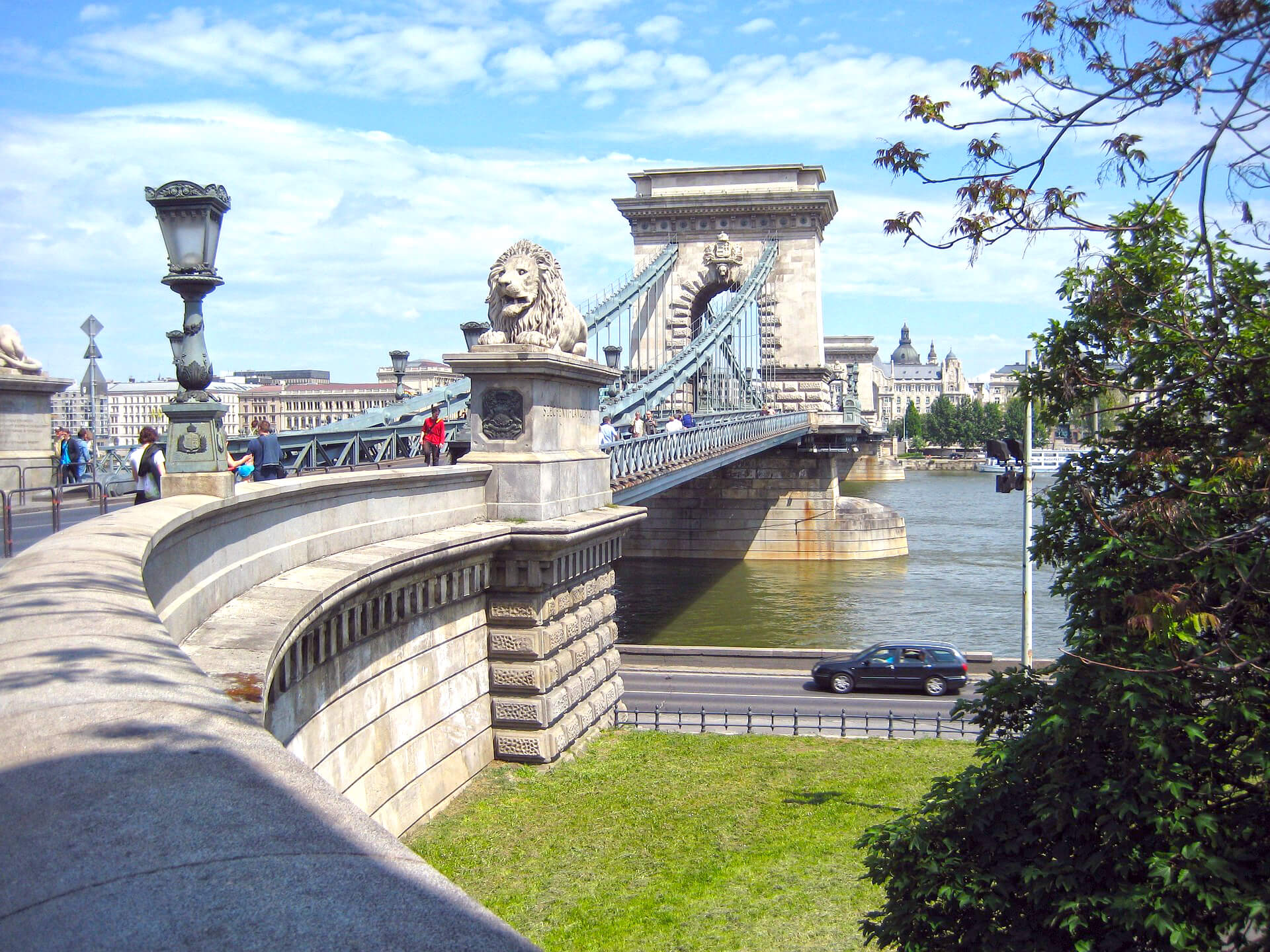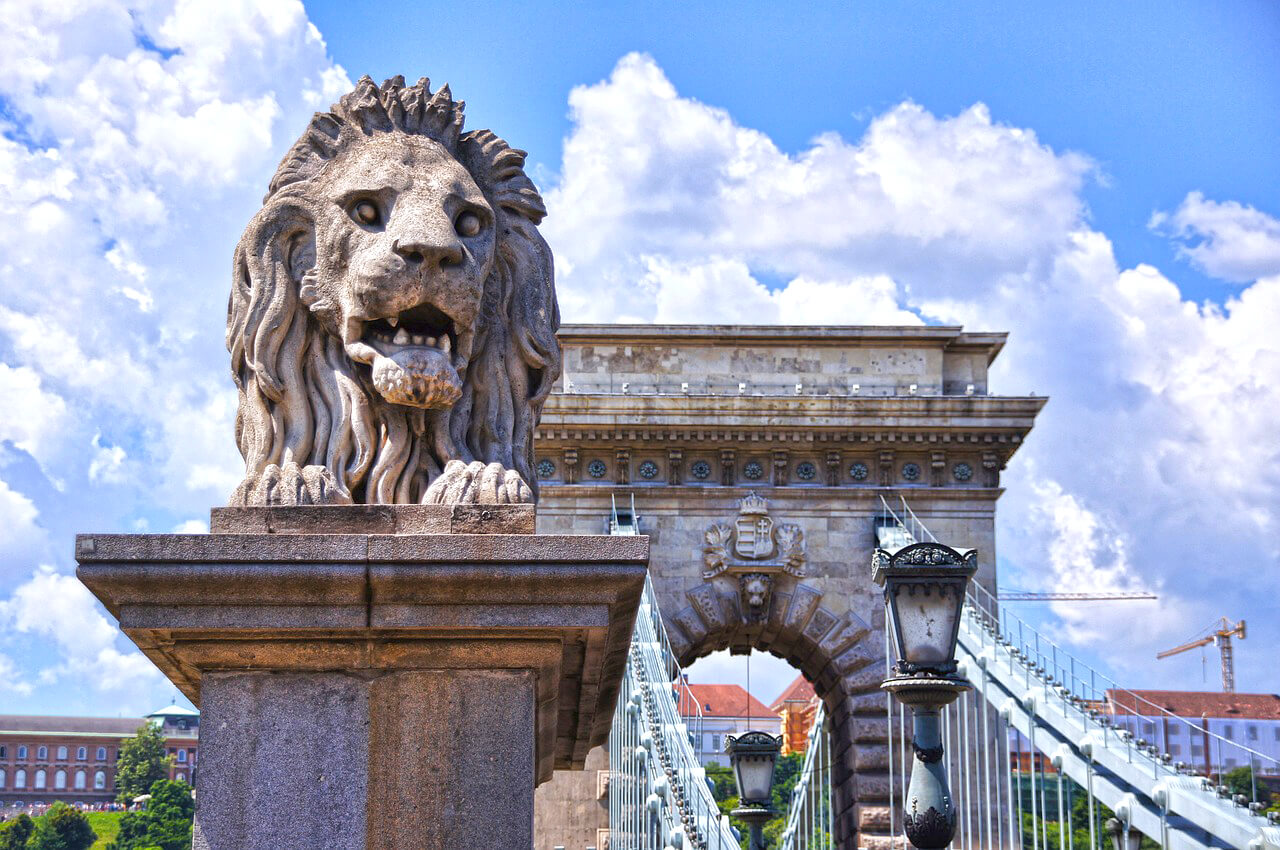Chain Bridge in Budapest


The Birth of a Vision
In the early 19th century, before the construction of the Chain Bridge, crossing the Danube was a challenging task. People relied on wooden barges or the frozen river during winters to traverse between Buda and Pest. Count Istvan Szechenyi, a prominent figure in 18th century Hungary, experienced the inconvenience firsthand when he was unable to attend his father’s funeral due to the lack of a permanent bridge. Inspired by this incident, Szechenyi established a foundation to finance the construction of a bridge that would unite the two sides of Budapest.

A Masterful Design
The construction of the Chain Bridge was entrusted to the renowned English engineer, William Tierney Clark. The project began in 1839, with financial support from Greek merchant Georgios Sinas. Clark designed the bridge as a suspension bridge with iron chains connecting the two towers. The stone lions guarding both ends of the bridge were sculpted by the talented artist Janos Marschalko in 1852. These majestic lions are reminiscent of the famous bronze lions in London’s Trafalgar Square.
The Bridge’s Inauguration and Significance
After a decade of meticulous planning and construction, the Chain Bridge was officially opened on November 20, 1849. It quickly became a symbol of progress and national pride for the Hungarian people. The bridge played a significant role in connecting Buda and Pest, which were previously divided. It not only facilitated transportation but also strengthened the cultural and economic ties between the two sides of the city.
Destruction and Resilience
Unfortunately, the Chain Bridge, like many other Budapest bridges, fell victim to the ravages of World War II. On January 18, 1945, retreating German troops blew up the bridge, leaving only its towers intact. However, the Hungarian people were determined to restore their beloved landmark. The bridge was rebuilt and reopened to the public on November 20, 1949, exactly 100 years after its initial inauguration.
Architectural Marvel and Symbol of Unity
The Chain Bridge is a testament to the architectural and engineering brilliance of its time. The bridge spans an impressive 375 meters in length, with a central span of over 200 meters. Its two towering pillars, made of cast iron, support the magnificent structure. These neoclassical pillars stand as a symbol of unity, connecting Buda and Pest both physically and metaphorically.

The Lions of the Chain Bridge
One of the most remarkable features of the Chain Bridge is the presence of stone lions at each end. These lions, sculpted by Janos Marschalko, exude a sense of grandeur and strength. They guard the entrance to the bridge and have become iconic symbols of Budapest. While some urban legends suggest that the lions lack tongues, they are, in fact, just hidden from certain angles, adding an air of mystery to these majestic creatures.

Illuminating Budapest’s Nightscape
The Chain Bridge is not only a marvel during the day but also transforms into a breathtaking spectacle at night. The bridge’s illuminations, installed in 1937, highlight its elegant structure and create a mesmerizing reflection on the Danube River. The play of lights, combined with the city’s enchanting skyline, including the nearby Hungarian Parliament, paints a picture of timeless beauty.
Historic Significance and Commemoration
The Chain Bridge holds immense historical significance for the people of Budapest. A plaque on the Pest side of the bridge commemorates the only two surviving bridges designed by William Tierney Clark: the Chain Bridge and the Bridge over the Thames in Marlow, England. This plaque serves as a reminder of Clark’s architectural legacy and the enduring bond between the two cities.
Exploring the Chain Bridge and Beyond
Walking across the Chain Bridge is not only a practical way to reach the other side of the city but also an experience filled with awe and wonder. As you stroll along the bridge, take a moment to admire the panoramic views of Budapest’s skyline, including the magnificent Hungarian Parliament. The bridge also provides convenient access to Szechenyi Square on the Pest side and Adam Clark Square on the Buda side, both offering a variety of attractions and historical landmarks.
FAQs
When was the Chain Bridge in Budapest built?
The construction of the Chain Bridge began in 1839 and was completed in 1849.
Who designed and built the Chain Bridge?
The Chain Bridge was designed by English engineer William Tierney Clark, and the project was supervised by Scottish engineer Adam Clark (no relation).
What is the Chain Bridge made of?
The bridge is constructed of cast iron.
How long is the Chain Bridge?
The total length of the Chain Bridge is approximately 375 meters.
What happened to the Chain Bridge during World War II?
The Chain Bridge was severely damaged during World War II. It was later rebuilt, with the reconstructed bridge closely matching the original design.
Can pedestrians use the Chain Bridge?
Yes, the Chain Bridge has pathways on both sides that are accessible to pedestrians.
Is there a fee to cross the Chain Bridge?
No, there's no fee to cross the Chain Bridge whether you're on foot, bicycle, or in a vehicle.
Is the Chain Bridge illuminated at night?
Yes, the Chain Bridge is beautifully illuminated at night, which adds to the charm of the Budapest cityscape.
